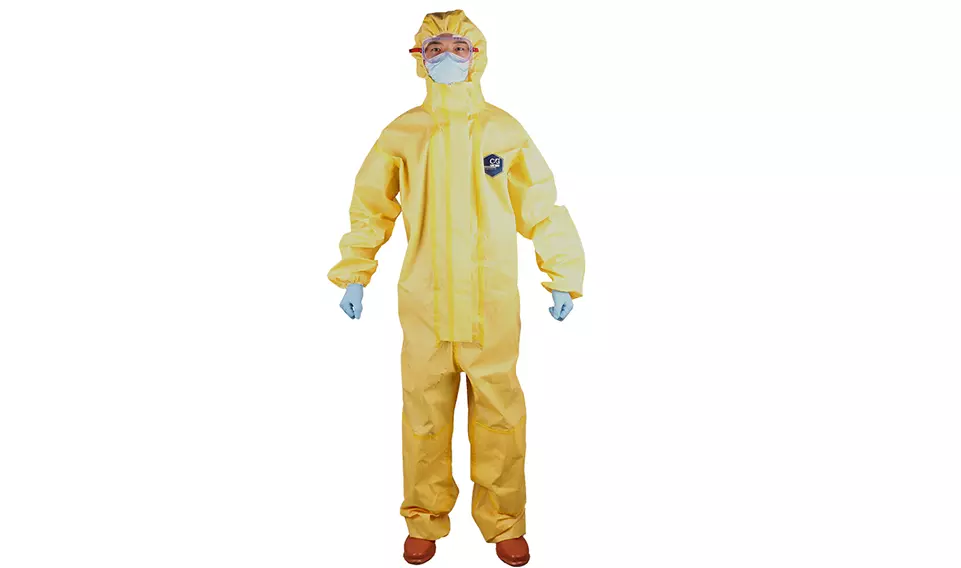
What are the differences between light one-piece protective clothing and heavy protective clothing?
While explaining the difference between the two protective clothing, we must first understand how the two are defined:
1. Heavy chemical protective clothing: also known as Class A chemical protective clothing, fully enclosed chemical protective clothing or airtight chemical protective clothing. It is the highest level of protection in the category of chemical protective clothing. The material is quite special and is often used in fire rescue, chemical leakage rescue and other occasions. Heavy chemical protective clothing is called airtight chemical protective clothing because it can effectively protect against the invasion of toxic gases.
2. Light chemical protective clothing: The definition is relatively broad. Chemical protective clothing other than heavy chemical protective clothing can be defined as light chemical protective clothing, which can mainly effectively protect against the invasion of chemical solvents, dust particles and viruses. Chemical protective clothing with protection levels of B, C, and D all belong to the category of light chemical protective clothing. It has a very wide range of applications and is used in and health care, chemical plant operations, spraying industry, etc.
The difference between the two can be analyzed from the following points:
1. Materiala. Material thickness: Heavy chemical protective clothing is thicker than light chemical protective clothing
b. Material type: Heavy chemical protective clothing generally uses flame-resistant cloth coated with PVC, polymer chemical protective film, polyester fiber and other fabrics; while light chemical protective clothing mostly uses flame-resistant cloth coated with chloroprene rubber.
2. Color markingThe color of heavy chemical protective clothing is mostly standard yellow, while light chemical protective clothing is orange-red.
3. Sealing performanceThe sealing performance of heavy chemical protective clothing is better than that of light chemical protective clothing. The whole person is wrapped inside the chemical protective clothing, and an airtight zipper is used with double-layer adhesive strips. Light chemical protective clothing generally protects the whole body, and the face needs to be equipped with a gas mask separately to protect against toxic substances.
4. Flexibility and comfortBecause heavy chemical protective clothing is relatively bulky and fully enclosed, it is generally put on and taken off by two people at the same time. In addition, due to the special nature of the material, people are very inflexible after wearing it. Light chemical protective clothing is light in weight, easy to wear, more flexible in operation, and has strong elasticity. It is faster and more convenient in general chemical operations and rescue.
5. Related accessoriesHeavy chemical protective clothing must be equipped with an air respirator because it is a closed space and requires air supply. Light chemical protective clothing is relatively flexible in configuration. If it is an emergency rescue, the operation time is long, and an external air respirator can be installed. If the substance is not very toxic, a special gas mask full mask can be used. If it is a laboratory operation, an ordinary half-mask gas mask and protective goggles can meet the requirements.
6. PriceThe price of light chemical protective clothing is much lower than that of heavy chemical protective clothing, generally about half the price of ordinary heavy chemical protective clothing. The current average market price of heavy chemical protective clothing is 8,000 to 10,000 yuan, while light chemical protective clothing is below 4,000 yuan. If it is ordinary liquid splash protection, the price of chemical protective clothing is about 300 yuan.
7. Applicable occasionsLight chemical protective clothing is not suitable for wearing at fire scenes, accident scenes or workplaces with toxic and harmful gases. It is only suitable for steel mills, petrochemical plants, telecommunications, aviation, emergency departments, and chemical plants.
Heavy chemical protective clothing is used by firefighters when working on-site with dangerous chemicals or corrosive substances. It is mainly used in Class A environments (such as: toxic and harmful workplaces, environments with unknown types and doses of toxic and harmful substances); biochemical environments; environmental detection teams;
hazardous materials handling, etc.












